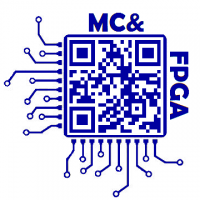Development of a Telegram Bot for Receiving Data from OPC Servers
Oleg Khmelik, Pavlo Galkin
III International Scientific and Practical Conference Theoretical and Applied Aspects of Device Development on Microcontrollers and FPGAs (MC&FPGA), Kharkiv, Ukraine, 2021, pp. 37-38.
Abstract
It is important to develop programming of the embedded control system which allows the real-time system to change and actually program the built-in control system based on the PLC. Chatbot is a computer program developed on the basis of neural networks and machine learning technologies, which can be used to communicate in audio or text format , but chatbot can also be used to program embedded systems without changing the PLC program itself. The purpose of the work is to develop a chatbot in the Telegram service, which can be used to obtain information from embedded systems based on the OPC server and send the necessary information at the request of the user.
Keywords: OPC, PLC, Telegram bot, Chatbot, embedded control system, data, servers, IoT, IIoT, machine learning technologies.
Full Text: PDF
References
- Lehnhoff S. et al. OPC unified architecture: A service-oriented architecture for smart grids //2012 First International Workshop on Software Engineering Challenges for the Smart Grid (SE-SmartGrids). – IEEE, 2012. – С. 1-7.
- Pavlo Galkin, Lydmila Golovkina, Igor Klyuchnyk Analysis of single-board computers for IoT and IIoT solutions in embedded control systems // 2018/10/9 IEEE –C. 297-302.
- R. Langmann et al., “Workshop: The TATU Lab & smart education”, 2016 13th International Conference on Remote Engineering and Virtual Instrumentation (REV), pp. 400-402, 2016
- P.V. Galkin, V.V. Gavrilenko and A.I. Mon’ko, “Issledovanie dalnosti i skorosti peredachi dannyih po vitoy pare v promyishlennyih setyah RS-485 i PROFIBUS [Investigation of the range and speed of data transmission over twisted pair in industrial networks RS-485 and PROFIBUS]”, Problems of Telecommunications, vol. 2, pp. 94-110, 2016.
- M. Holikov and P. Galkin, “Analysis of possibilities to use neural network for remote control of electronic devices”, Technology audit and production reserves, vol. 2, no. 6, pp. 42-49, 2018.
- S.I. Gorb, V.V. Nikolskyi, V.F. Shapo and S.H. Khniunin, “Programming controllers in the integrated development environment: training manual”, Practice. – Odessa: National University Odessa Maritime Academy, pp. 164, 2017.
- Y. Chuanying, L. He and L. Zhihong, “Implementation of migrations from Class OPC to OPC UA for data acquisition system,” 2012 International Conference on System Science and Engineering (ICSSE), 2012, pp. 588-592, doi: 10.1109/ICSSE.2012.6257255.
- I. V. Latypov, E. V. Ehlakov, N. Ivanov, E. F. Smirnov and I. Y. Khramov, “News Aggregator from Telegram Channels Using Thematic Text Analysis,” 2021 IEEE Conference of Russian Young Researchers in Electrical and Electronic Engineering (ElConRus), 2021, pp. 2150-2153, doi: 10.1109/ElConRus51938.2021.9396536.
- P. Galkin, “Analysis models of collection data in wireless sensor networks,” 2016 Third International Scientific-Practical Conference Problems of Infocommunications Science and Technology (PIC S&T), 2016, pp. 233-236, doi: 10.1109/INFOCOMMST.2016.7905392.

